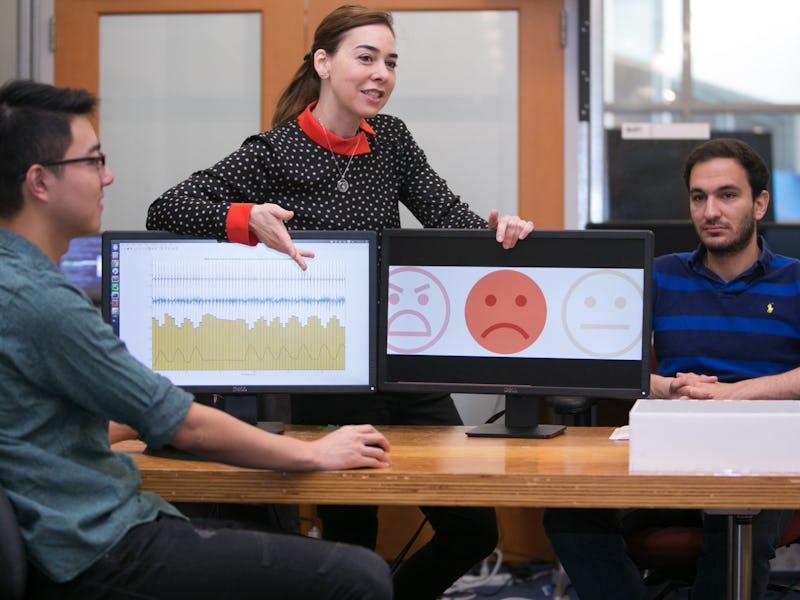MIT Created Wireless Signals That Can Recognize Emotions

Most of the time, picking up on someone’s emotions requires a good look at their face and body language. Even then, it’s still an imprecise science — but maybe not for long. Researchers at MIT have created a new system that uses wireless signals to recognize someone’s emotions without cameras or physiological monitors.
The system is called EQ-Radio. It uses radio frequency (RF) signals to monitor someone’s heartbeat. An algorithm then extracts individual heartbeats, measures the tiny differences in the length of each beat, and sends the resulting data to an emotion classifier to figure out how the subject feels at a given moment. The emotion classifier also uses machine learning to become more accurate over time.
“Our work shows that wireless signals can capture information about human behavior that is not always visible to the naked eye,” EQ-Radio project lead and MIT professor Dina Katabi said in a press release. “We believe that our results could pave the way for future technologies that could help monitor and diagnose conditions like depression and anxiety.” Here’s a video demonstrating the concept:
MIT’s efforts join other attempts to use technology to determine someone’s emotions. Others are examining Instagram photos for signs of depression and using Amazon Echo to detect mental disorders.
Some of those projects end up being little more than fun gimmicks. But MIT’s work on EQ-Radio shows that tech really can help determine if someone is suffering from problems that aren’t obvious to human observers. All it takes is some RF signals mixed with a bunch of algorithms and a dash of machine learning.
You can learn more about how EQ-Radio works by reading MIT’s paper below: